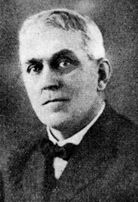Queensland state election, 1929
|
|
||||||||||||||||||||||||||||||||||
|---|---|---|---|---|---|---|---|---|---|---|---|---|---|---|---|---|---|---|---|---|---|---|---|---|---|---|---|---|---|---|---|---|---|---|
|
||||||||||||||||||||||||||||||||||
|
All 72 seats in the Legislative Assembly of Queensland |
||||||||||||||||||||||||||||||||||
|
||||||||||||||||||||||||||||||||||
|
||||||||||||||||||||||||||||||||||
Elections were held in the Australian state of Queensland on 11 May 1929 to elect the 72 members of the state's Legislative Assembly. In this election, Irene Longman became the first woman to both stand and be elected into the Queensland Parliament.
The Labor government was seeking its sixth continuous term in office since the 1915 election; it would be Premier William McCormack's second election. His main opponent was the Country and Progressive National Party (CPNP), led by Arthur Edward Moore. The term had not gone well for McCormack's government, including a railway lock-out in 1927 which pitted the Labor Party against the union movement, restrictive financial policies and attempts to sell off state-owned enterprises, as well as suggestions of corruption which later came to be known as the Mungana affair.
The election resulted in the defeat of the McCormack government, and the first non-Labor ministry since 1915.
The election saw the defeat of the Labor government by the CPNP.
Queensland state election, 11 May 1929
Legislative Assembly
<< 1926 — 1932 >>
...
Wikipedia


